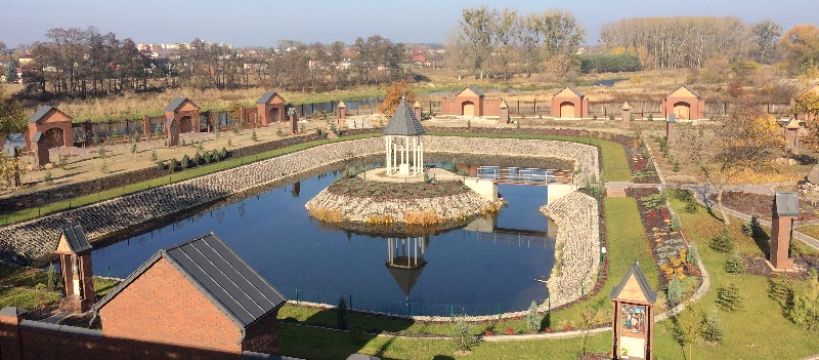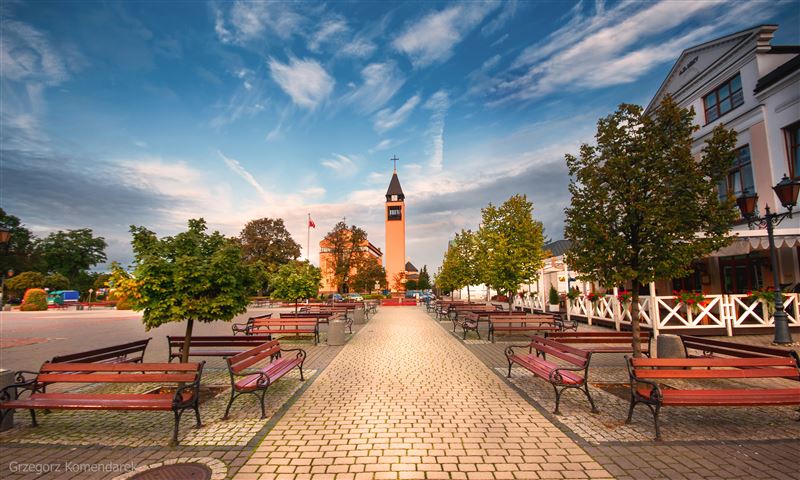Church of St. Lawrence and the Rosary Gardens in Sochaczew
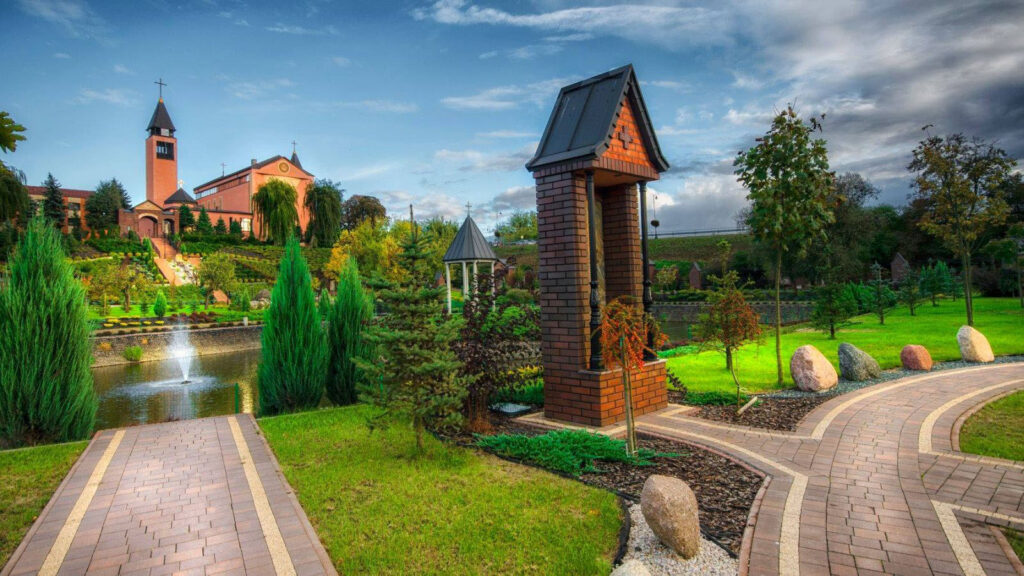
PARISH HISTORY:
Since ancient times, Sochaczew has been an important center of religious life in Mazovia. Being part of the Czersk archdeaconry, it was under the jurisdiction of the Bishop of Poznań. The oldest church in Sochaczew was the Romanesque church of St. Holy Trinity, built in the 11th century on the so-called I will sacrifice. Currently, it is located at the intersection of Farna and Staszica streets. This church formed a whole with the Benedictine monastery, which was a branch of the Lubiń abbey. According to the data contained in the 1463-1464 Sochaczewski Codex of the Ronika Świętokrzyski Nowy, Prince Bolesław Krzywousty was to die in this monastery on October 28, 1138. The research conducted so far does not provide a clear answer on this subject. The duke's body was buried in the crypt of the cathedral in Płock, and the presumed place of his death was commemorated with a monument at ul. Staszica, at the house of the Sisters of the Resurrection.
Visiting the parish in 1603, the bishop of Poznań, Wawrzyniec Goślicki, wrote down that the brick parish church in Sochaczew dedicated to st. Lawrence and St. Magdalena “is profaned and defiled, and like a desolate widow, she stands isolated from human dwellings with her cemetery well fenced off. It has three cloisters; its roof is in good condition.
There were four chapels in this church. In addition to the chapels, there were altars of various craft fraternities with their own endowments. Among the fraternities operating at the church were m.in. Spiritual Brotherhood (spiritualis), founded at the request of the clergy of the entire Sochaczew deanery by the bishop of Poznań, Andrzej of Bnin, (1438-1479), and confirmed by the metropolitan archbishop of Gniezno, Zbigniew Oleśnicki (1481-1493), the primate of Poland and a college of six mansionaries. During the great fire of the city in 1618, the church burnt down, but it was rebuilt and from the protocols of canonical bishops' visits we learn that it was vaulted in the presbytery, and boarded up in the main nave. It had five altars. 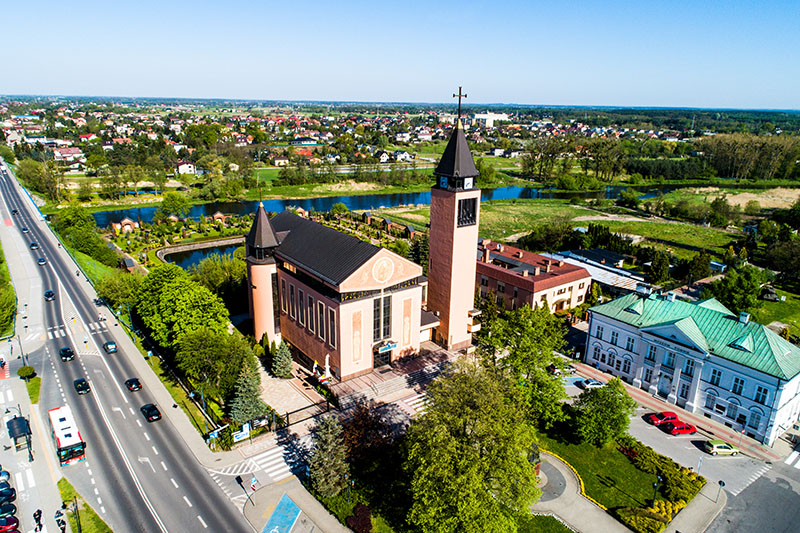
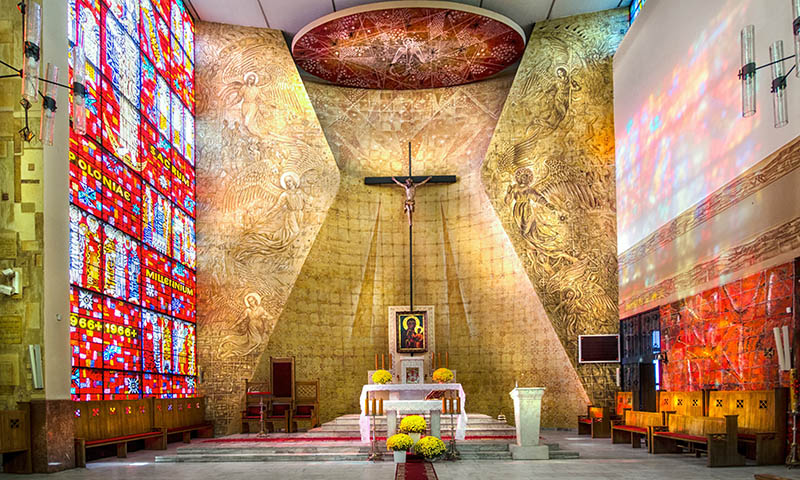
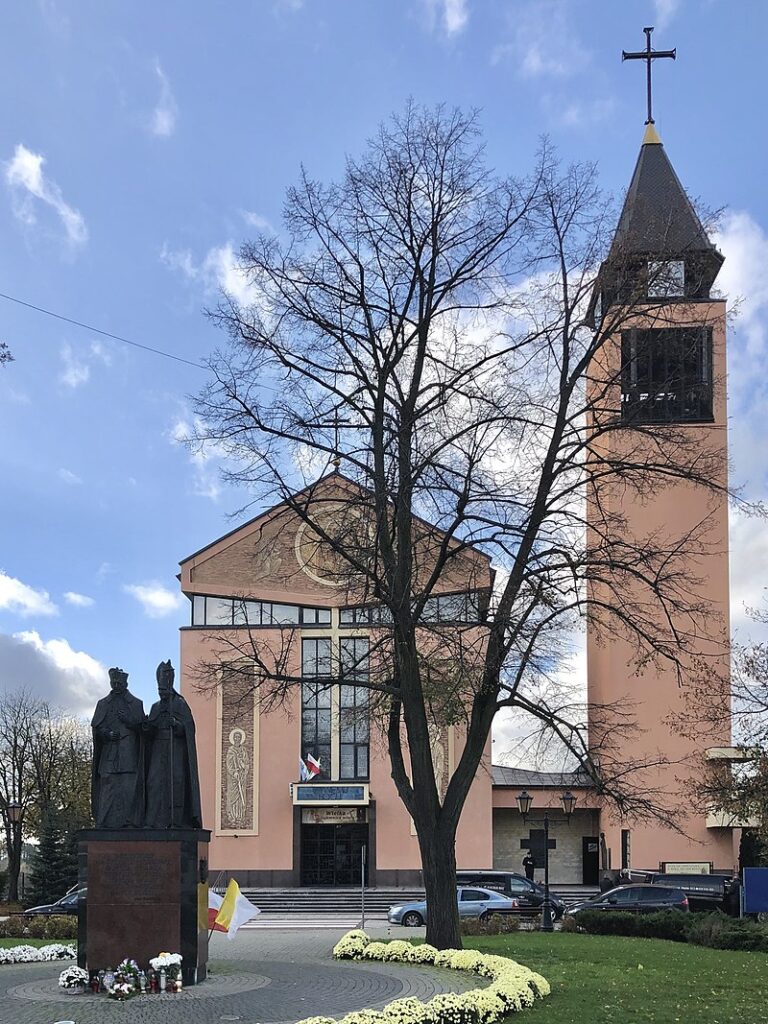
Due to the passage of time, the old Dominican church and monastery required a general renovation, so it was decided to demolish both the church and the monastery. The Dominicans did not have the money for such a costly investment, so the Sochaczew Chamberlain, Anna Łuszczewska, hurried to their aid, donating one hundred thousand pieces of burnt bricks for the erection of a new monastery. The ceremony of laying the foundation stone took place on August 25, 1784, in the presence of local landowners and the superior of the Dominicans, Father Czesław Gleczmański. The church had seven altars. In 1820, after the Dominican nuns were removed from Sochaczew, all parish services were moved to the same church of St. Santa. After the dissolution of the Dominican Order in 1867, the church became a parish church, and the monastery became a presbytery. During World War I, in 1914, the church was destroyed by German cannon shells. After the fights ended, its reconstruction began, which was completed in 1922. The rebuilt temple was consecrated on October 1 of that year by the suffragan bishop of Warsaw, Stanisław Gall. In September 1939, despite the fact that Sochaczew was the site of many fierce battles, the parish church was only partially damaged, while the Dominican church, taken over in 1915, was demolished. During the Nazi occupation, bricks from the remains of the church walls were used to build roads and the airport in Bielice. Due to the destruction of the church and rectory, the then parish priest, Fr. Antoni Kaczyński worked in difficult conditions, living in a gravedigger's house in the cemetery. After the end of World War II, Fr. Kaczyński built a makeshift church according to the design of J. Krawczyński, which was consecrated in November 1946 by the suffragan bishop of Warsaw, Wacław Majewski. For several years it served as a parish church. ROSARY GARDENS
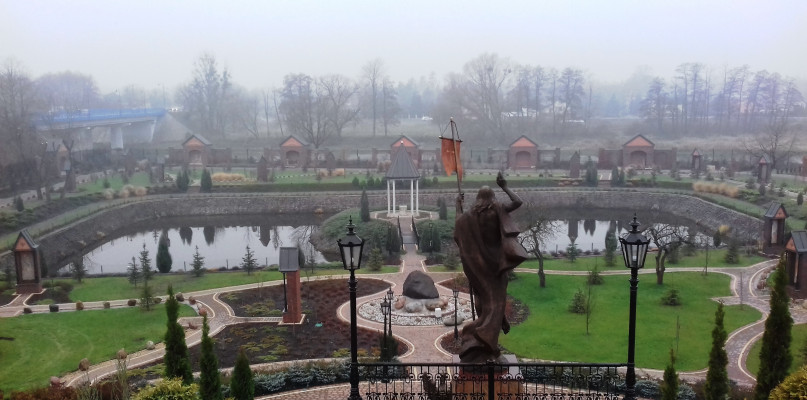
The gardens are to refer to the Dominican traditions on which our city grew. To the fact that the order tended the garden on our mother river. Pastor of the parish of St. Wawrzyńca stood in the competition with the capricious, steep, flooded waterfront and decided to arrange a unique place here, and at the same time open to everyone. Unique both for its beauty and for its prayer. He invited parishioners who funded their shrines to cooperate. The Reflection Garden, as the parish calls it, has been shrouded in secrecy since the beginning of the work. In May 2011, when the area on the Bzura River behind the church began to change, parish priest Piotr Żądło did not want to reveal any details. He only told us that he had a vision of what he would like to create in his heart.
Today we know much more about investments. In a letter to the parishioners and "all benefactors", the parish priest Żądło describes the details of the Rosary Garden of Silence - the Garden of Reflection - in the Bzura Valley (asking for financial support). According to the will of the parish, the foundation is to be a significant part of the history of the Sochaczew region: “Sochaczew is an old town erected on a high escarpment. The Cross has been guarding this Earth for a thousand years. It was here on the Bzura river that our fathers built churches and monasteries to draw strength and inspiration to serve God, Homeland, Church and Family,” reads the introduction of the magazine.
The parish priest would like the Zaduma garden to become a symbolic complement to the recent events related to the return of the "famous for graces" image of Our Lady of the Rosary of Sochaczew and the creation of a chapel dedicated to her. For this reason, small shrines depicting scenes of the twenty mysteries of the Holy Rosary will be built among the winding paths in the Reflection Garden.
It can already be seen today that a gazebo with a statue of Our Lady of the Rosary ("greeting those entering her garden") will become a definite distinguishing feature of the Garden, set on an island in the middle of an artificial water reservoir, and at the same time in the center of the entire garden.
As the parish priest writes, the entire garden will be illuminated and publicized, equipped with "greenery of various kinds". This may be a reference to the Dominican garden, which probably once existed on the Bzura River in Sochaczew, more or less at the height of Primary School No. 4. 